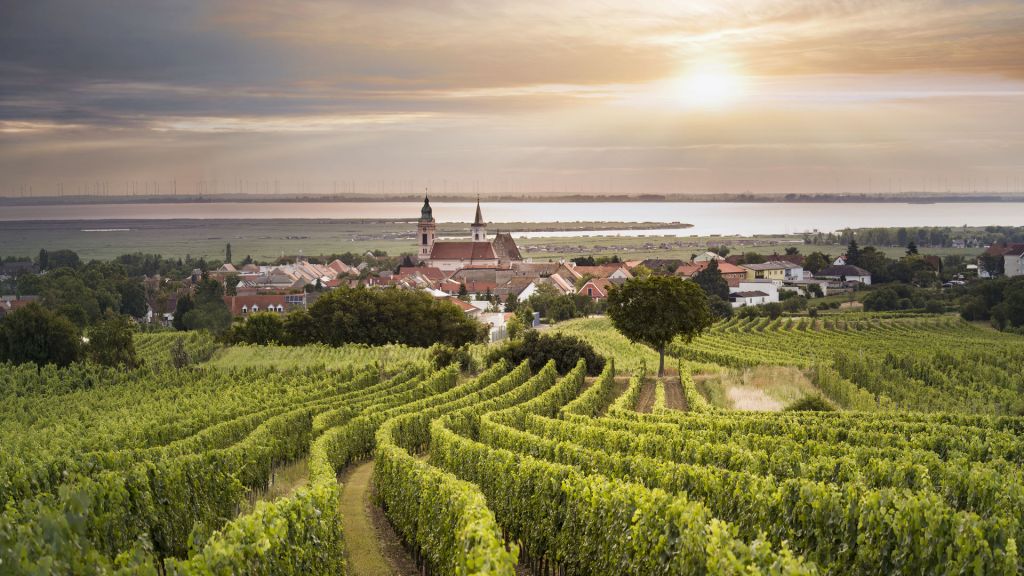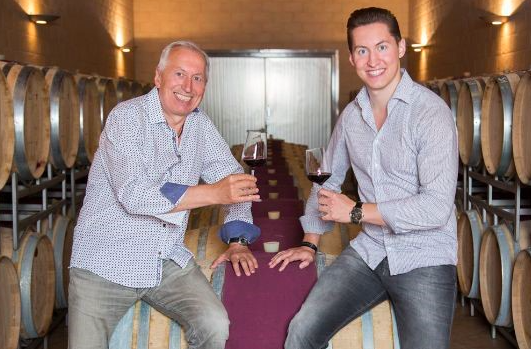This week, we’re taking a trip away from the Rhone and Napa to the shores of Lake Neusiedl in Austria’s Burgenland region. There you’ll find the vines and winery of the father/son team of Ernst and Roland Steindorfer. And some of the most outstanding red wine values anywhere.

The red grape here is Austria’s most important high-quality varietal, Blaufränkisch. Like Gamay, Pinot Noir, Chardonnay and Aligote, it’s a descendent of the obscure Gouais Blanc grape grown in France in the Middle Ages. It seems to have emerged from a wild crossing in what is now Austria, and by the mid-18th Century was widely planted and known as Lemberger (a name you’ll still see where it’s planted in the USA).
Burgenland Climate. While you’ll find Blaufränkisch across Austria today, it really thrives in the eastern province of Burgenland. Burgenland was, for years and years, the poorest, most economically isolated region in all of Austria – electricity didn’t reach most homes until the last quarter of the 20th Century! It’s also one of the flattest areas of Austria – a bump 80 feet high is called a “hill” here – and one of the warmest as hot breezes flow westward from the Pannonian Plain to the east. And, while daytime temperatures can soar, the long, shallow (only 3 feet deep!) glacial Lake Neusiedl both cools the region during the early growing season – capturing freshness – and then releases stored warmth to let red grapes ripen to perfection in the fall.
And Ernst and Roland Steindorfer know what to do with ripe red grapes. Ernst started his winemaking career working with sweet wine legend Alois Kracher, who took advantage of the autumn fogs coming off Lake Neusiedl to cultivate “noble rot” and make glorious sweet wines. When he started his own estate, though, Ernst focused mainly on dry red and white wines (although he still makes a pretty mean stickie himself!).
Although the grape is old and the farming here very natural and traditional, the winemaking is frankly modern. After a warm, gently extractive fermentation in tank, Ernst and Roland rack their top reds into high-quality new French oak casks. The wines have the stuffing to handle the new wood, especially since the Steindorfers choose to use larger, 500 liter barrels that are more than twice the size of Bordeaux barriques. The 17 months in wood elevates Blaufränkisch’s natural spice and smooths out tannins without attenuating the rich, ripe fruit flavors at all.
What’s the wine like? It’s wonderfully aromatic, serving up a perfume of sweet black cherry and brambly berries, cracked black pepper, and a big dose of baking spice from both the grape’s own character and 17 months in new 500L French oak casks. The palate is a captivating blend of richness – ripe black cherry flavors and a velvety feel – and freshening lift – fine-grained tannins and a pop of pepper and spice. The supple, warming finish flows on nicely, with enough grip to handle a steak or lamb or pork but supple enough to simply enjoy by a fire.


